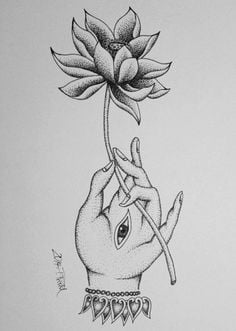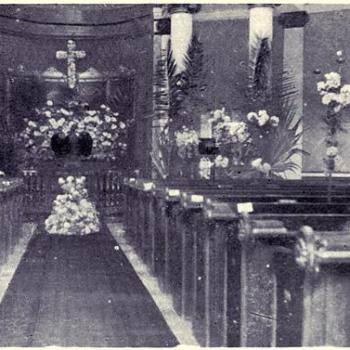Once upon a time the world honored one was at Vulture Peak. Before a vast crowd of lay practitioners, nuns, and monks, angelic creatures, and even gods, he held up a single flower and twirled it. Of the assembled crowd only the disciple Mahakashyapa, responded, breaking into a wide grin.
The Buddha, lord of wisdom, physician of the heart, announced “I have the eye treasury of the true Dharma, the marvelous mind of nirvana, the true form of no-form, the subtle gate of the Dharma. This wisdom does not depend on letters, it is transmitted outside all formal teachings. I now entrust it to Kashyapa.”
Gateless Gate, Wumenguan, Case 6
James Myoun Ford
Empty Moon Zen
I’ve always loved this little story, one of the foundational teachings of our Zen way. In his anthology that gathers this case, Wumen appends an appreciatory verse.
Twirling the flower
The snake shows its tail.
Kashyapa breaks into a smile
And the world is startled into silence
Pretty much a complete summation of the Zen way.
Of course what that actually is, isn’t aways so clear. I was rummaging around the interwebs and found a number of comments on the case. Among them was a straight forward explanation that this was an example of the Buddha using telepathy to transmit his authority as some sort of mysterious “energy transmission.”
Another commentator offered a much more helpful suggestion that the event was not unlike William Blake’s wonderful pointing in his Auguries of Innocence.
To see a World in a Grain of Sand
And a Heaven in a Wild Flower
Hold Infinity in the palm of your hand
And Eternity in an hour
And I very much like that this appreciation of the moment as something astonishing is not the secret treasure of a single culture or religion. If it is true, it should be accessible, it should have precedent in any number of locations. And it does.
Still, as to this particular event it’s a central image in Zen’s evolved origin story. It is in part a response to the critical Chinese question to the new Buddhists, who are your parents? And it is something more.
The story actually has no analog in Pali texts, or for that matter, Sanskrit. It’s totally a Chinese thing. The core point is attributed to Bodhidharma, the legendary founder of Zen in China sometime early in the fifth century. It is that more in the story of the twirled flower and the answering grin.
A special transmission outside the scriptures,
Not depending on words and letters;
Directly pointing to the mind
Seeing into one’s true nature and attaining Buddhahood.
While these various points are a summation of the Zen inheritance, they actually aren’t put into Bodhidharma’s mouth until the beginning of the twelfth century. Similarly, the whole story of the twirling flower has no documentary attestation, as a scholar might say, before Wumen’s wonderful version in the Gateless Gate, itself a twelfth century document.
So, maybe not the words of the Buddha. Or, his twirling flower. Nor, for that matter Mahakashyapa’s answering smile.
And. But. That turning. Here we are invited into a liminal time where history, myth, and something else begins to present.
Whoever wrote the Wikipedia article on the Flower Sermon chose to cite an observation from Carl Jung and C. Kerenyi.
“One day the Buddha silently held up a flower before the assembled throng of his disciples. This was the famous “Flower Sermon.” Formally speaking, much the same thing happened in Eleusis when a mown ear of grain was silently shown. Even if our interpretation of this symbol is erroneous, the fact remains that a mown ear was shown in the course of the mysteries and that this kind of “wordless sermon” was the sole form of instruction in Eleusis which we may assume with certainty.”
Certainly better than telepathy. And I kind of like that straight forward showing. Not unlike the transformed wine and bread presented by the priest at the Christian communion. Or, the offering of a stick of incense at a Zen morning liturgy.
Just this.
But that’s not the whole of this story. There’s also that grin. Something of a Cheshire Cat commentary. A smile. Just a smile.
Like a box and it’s lid. It’s like the moment that follows the showing of the blessed bread and wine – the actual reception of communion.
And in that just this the marvels of past and present. Each absent in that moment. And, each fully present. The flower just as it is. The grin just as it is. They’re independent actions. Full. Complete. And, connected.
The whole world. All of it. Our lives and our stories collapsed in a moment of noticing.
Just this. And from this noticing. From that flower as it twirled. From that smile, that lovely grin. Just as it happened.
An invitation into all that is. And was. And will ever be.
Everything follows, every blessed thing.













